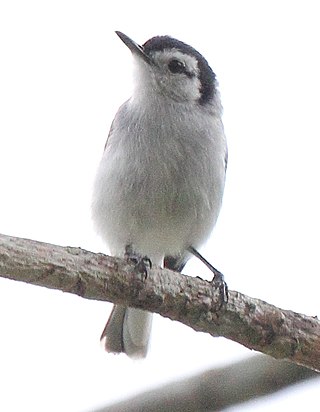
The grey-fronted dove is a large New World tropical dove. It is found on Trinidad and in every mainland South American country except Chile.

The scaled pigeon is a large New World tropical dove. It is a resident breeder from southern Mexico south to western Ecuador, southern Brazil, northern Argentina, and Trinidad.

The short-billed pigeon is a largish pigeon which breeds from southern Mexico south to northwestern Colombia. It is a member of a clade of Patagioenas that contains the smaller and rather plain species with characteristic calls that constitute the subgenus Oenoenas.

The ruddy pigeon is a largish pigeon which breeds from Costa Rica south to western Ecuador, Bolivia, and central Brazil. It belongs to a clade of small and rather plain species of Patagioenas with characteristic calls that constitute the subgenus Oenoenas. Like the other New World pigeons, it was formerly united with their Old World relatives in Columba, but today the New World genus Patagioenas is recognized as distinct again.

The tropical gnatcatcher is a small active insectivorous songbird, which is a resident species throughout a large part of northern South America. It was formerly considered as conspecific with the white-browed gnatcatcher.

Patagioenas is a genus of New World pigeons whose distinctness from the genus Columba was long disputed but ultimately confirmed. It is basal to the Columba-Streptopelia radiation. Their ancestors diverged from that lineage probably over 8 million years ago. While the biogeographic pattern of this group suggests that the ancestors of the typical pigeons and turtle-doves settled the Old World from the Americas, Patagioenas may just as well be the offspring of Old World pigeons, which only radiated into different genera later, given that the cuckoo-doves (Macropygia) of Southeast Asia also seem to be closely related.

Geoffroy's daggerbill, Geoffroy's wedgebill, or eastern wedge-billed hummingbird is a species of hummingbird in the family Trochilidae. It is found in Bolivia, Colombia, Ecuador, Peru, and Venezuela.

The fork-tailed woodnymph is a species of hummingbird in the "emeralds", tribe Trochilini of subfamily Trochilinae. It is found in every mainland South American country except Chile and Uruguay.

Chapman's swift is a species of bird in subfamily Apodinae of the swift family Apodidae. It is found in Bolivia, Brazil, Colombia, French Guiana, Guyana, Panama, Peru, Suriname, Trinidad, Venezuela, and possibly Ecuador.

The white-fronted nunbird is a species of near-passerine bird in the family Bucconidae, the puffbirds, nunlets, and nunbirds. It is found Bolivia, Brazil, Colombia, Costa Rica, Ecuador, Honduras, Nicaragua, Panama, Peru, and Venezuela.

The lined forest falcon is a species of bird of prey in subfamily Herpetotherinae of family Falconidae, the falcons and caracaras. It is found in Bolivia, Brazil, Colombia, Ecuador, French Guiana, Guyana, Peru, Suriname, and Venezuela.

The dusky pigeon is a species of bird in the family Columbidae. It is found in Colombia and Ecuador.

The spot-winged pigeon is a species of bird in the family Columbidae. It is found in Argentina, Bolivia, Brazil, Chile, Paraguay, Peru, and Uruguay.

The blackish rail is a species of bird in the subfamily Rallinae of the rail, crake, and coot family Rallidae. It is found in Argentina, Brazil, Colombia, Ecuador, Paraguay, Peru, Venezuela, and possibly Bolivia.

The ruddy foliage-gleaner is a species of bird in the Furnariinae subfamily of the ovenbird family Furnariidae. Its range is highly disjunct, with populations in Mexico, several Central American countries, and in every mainland South American country except Argentina, Chile, Paraguay, and Uruguay.

The black-banded woodcreeper is a sub-oscine passerine bird in subfamily Dendrocolaptinae of the ovenbird family Furnariidae. It is found discontinuously from Chiapas, Mexico, to Panama and in every mainland South American country except Chile and Uruguay.

The white-streaked antvireo or white-spotted antvireo is a species of bird in subfamily Thamnophilinae of family Thamnophilidae, the "typical antbirds". It is found in Colombia, Ecuador, Peru, Suriname, and Venezuela.

The ruddy spinetail is a species of bird in the Furnariinae subfamily of the ovenbird family Furnariidae. It is found in Bolivia, Brazil, Colombia, Ecuador, Guyana, Peru, Suriname, Venezuela, and possibly Guyana.

The yellow-billed jacamar is a species of bird in the family Galbulidae. It is found in Brazil, Colombia, Ecuador, French Guiana, Guyana, Peru, Suriname, and Venezuela.

The dusky leaftosser or South American leaftosser is a bird in subfamily Sclerurinae, the leaftossers and miners, of the ovenbird family Furnariidae. It is found in Bolivia, Brazil, Colombia, Ecuador, French Giana, Guyana, Panama, Peru, Suriname, and Venezuela.























